Sports Photographer of the Year BRYN LENNON talks about the craft behind some of the images that won him the Ed Lacy Trophy
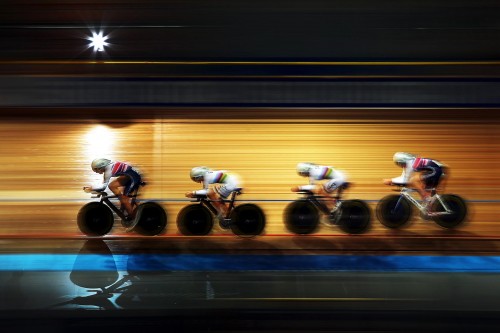
It has been a week, but for SJA member Bryn Lennon, the idea that he is the Sports Photographer of the Year is still taking time to get used to. “I felt very privileged to see my name etched on to the SJA trophy beside that long list of illustrious names,” he said.
“It’s always a great night and it was all a bit of a blur as I walked up to the stage with everyone shaking my hand and handing you things. I’m still a bit shocked and it’s definitely still sinking in.”
Getty Images photographer Lennon was presented with the Ed Lacy Trophy last Monday at the SJA’s British Sports Journalism Awards in London after the judges said his work “had a total view of the sport”.
That sport is cycling, and Lennon is a life-long cyclist. “There’s many subtleties and idiosyncrasies to cycling,” he said, “and it helps hugely to know them when covering the sport, just like many sports in that respect.
“Knowledge of the sport doesn’t necessarily make you a better photographer but it helps you be in the right place at the right time and gives you a fighting chance of getting a good picture.” According to the judges, who awarded Lennon the prize for the Specialist Sports Portfolio as well, his chosen images “had a surprise in every shot”.
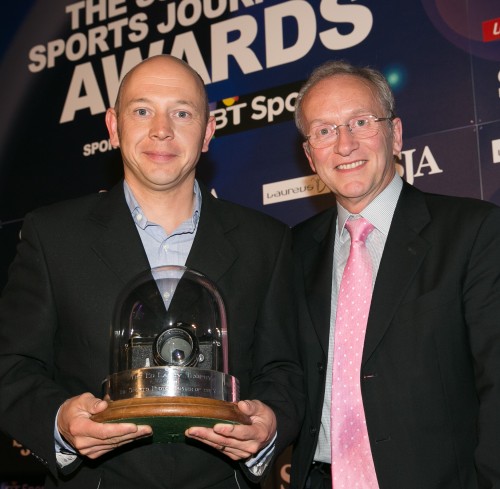
These are halcyon days for British cycling, and for the journalists who for many years worked hard covering the sport which now is delivering golden success on the velodrome tracks and the road race routes around the world.
Perhaps inevitably, much of Lennon’s winning folio came from the Tour de France. “A lot of the images were taken with the use of an in-race moto, which is by far the best way to cover a cycle race.
“It doesn’t guarantee you pictures, but again gives you a fighting chance of being in the right place at the right time.”
And some times, it is a matter of spotting something than no one else, whether photographers, reporters or the usually all-seeing eye of global television cameras, manage to observe.
That was certainly the case with one cheeky image in Lennon’s winning portfolio. “Fabian Cancellara took an impressive win in the Tour of Flanders and as I stood photographing the usual podium picture, out the corner of my eye I saw Peter Sagan doing something with his hand.
“Instinctively, I zoomed and pressed the shutter as I saw what he was up to!
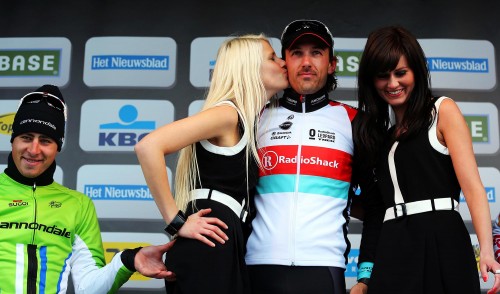
“I’m not sure if even TV captured the moment and I know not many other photographers saw it, so the rest of the media started commenting on what appeared to been happening solely based on my picture. I had to send it out, but I was a bit concerned as I thought I might have stitched Sagan up a little. Then again, if you grope someone’s bum in front of the world’s media…”
This year will be Lennon’s 10th working on the Tour de France, and such experience is often an advantage when it comes to being in the right place for key pictures, as was the case with another of his award-winning images.
“Sometimes, you are reminded what a huge privilege it is to get to be so close to the world’s best cyclists as they ride to career-defining victories,” Lennon said. I’m not sure there’s any other sport where you get that sort of access.
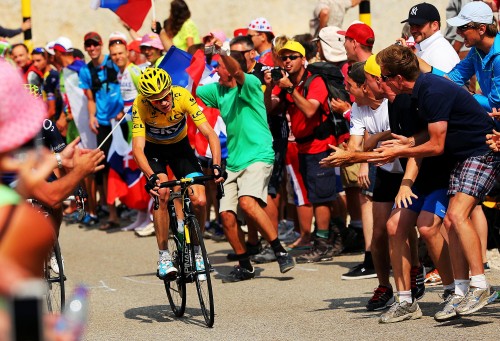
“In this instance we were closer to Chris Froome than most of his rivals were. A huge amount of stress, aggravation and speculation usually precede a stage like that one. The Ventoux stage was designated a ‘Queen’ stage, usually the highest and toughest point of the whole tour. There’s so much that can happen and so many variables that you just hope that when the winner makes his move you are able to work and shoot him from the back of your motorbike.
“Everyone is super-nervous, from the riders to race organisers and the photographers. The race regulators (the motorbikes that ride ahead and allow us to shoot the racers) had called ‘pool’ earlier on the climb, which meant that only the designated ‘pool’ photographer could work, and we were told to ride further up the climb. Suddenly, they reopened it so we got one last chance to work with Froomey before the top. I was very pleased to see that when he emerged from the crowds, he was leading and looked like he was strong enough to go on and win.”
Another of Lennon’s portfolio probably needs a second glance before the casual viewer realises that it is even a picture of cycle racing. It was taken by Lennon during the Tour of Oman.
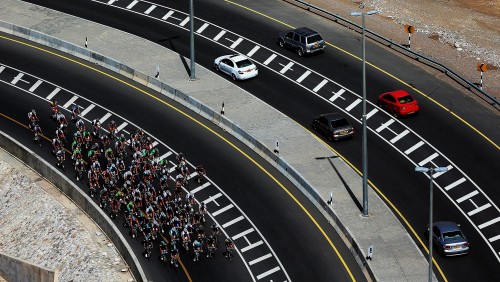
“Oman is such a beautiful country and it’s really impressive to stand on top of the climb of Bousher Almarat looking out to the coast and over Muscat,” Lennon said. “It’s such a graphic sight when you look down to see the markings on the road below, the cars passing on the opposite side of the road and the peloton approaching the bottom of the climb. The sun always shines in Oman, so that helps hugely in setting up a decent photo.”
Lennon studied photography at the London College of Printing, and after he left college he got a job working for Pickfords removals for a year, picking up what freelance photography he could. Eventually, he got a job in the dark room at a specialist motorsport agency, where he worked for three years before joining what was then the AllSport agency in 2001, around the time that it was acquired by Getty Images.
Lennon’s “career path” demonstrates how adaptable and willing to try other routes young sports photographers need to be. Initially, in the days before digital photography, Lennon was employed to work as a wire tech, processing films at F1 Grand Prix, and also shooting some other sport and motorsport events where possible. “I started shooting some of the events at Manchester velodrome and other tracks, and I got my first break into road cycling photography when Steve Rose sent me to the Tour de France to transmit the pics in 2005 for our snappers.”
Nearly a decade on, and Lennon himself was taking award-winning pictures such as this…
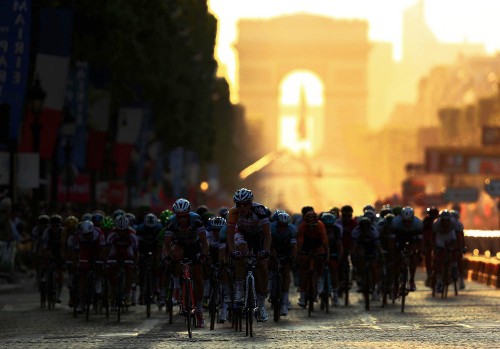
“The Tour de France race organisers ASO were keen to bring the curtain down on the 100th edition of the race in style and I knew beforehand it was particularly important to try and capture this in a picture.
“The stage started much later than usual so the peloton could ride in the sunset. There was a small window of half decent light when the sun illuminated the most iconic and eagerly anticipated sight of the Tour de France – for the riders and the photographers alike.”
That was just a selection of Lennon’s work. Making the key decision on what pictures to include in his portfolio entry was perhaps as tough as getting the pictures in the first place.
“I find selecting a folio very difficult, particularly a specialist folio as you’ve followed the same sport around the world day-in, day-out and you become so close to the pictures and stories – often too close.
“It’s balancing a range of the different photographic techniques There will always be pictures that you feel should be in there, but are too similar, so you have to make a brutal choice.”
- All the winners from the SJA Sports Journalism Awards, sponsored by BT Sport
- Glitzy night puts sports journalism in the picture
- Lennon masters cycling’s long and winding road
- A gallery of some of the leading pictures in our competitions
- Interested in joining the SJA? Click here for more details
UPCOMING SJA EVENTS
Thu Apr 3: Media lunch with boxer George Groves, The Driver, Kings Cross. Booking details here here
Thu Apr 10: SJA annual meeting, Old Cock Tavern, Fleet Street
Mon Apr 14: SJA Spring Golf Day: Croham Hurst GC, Surrey. Booking details to be announced